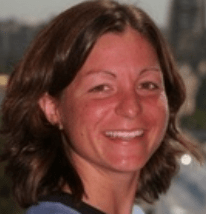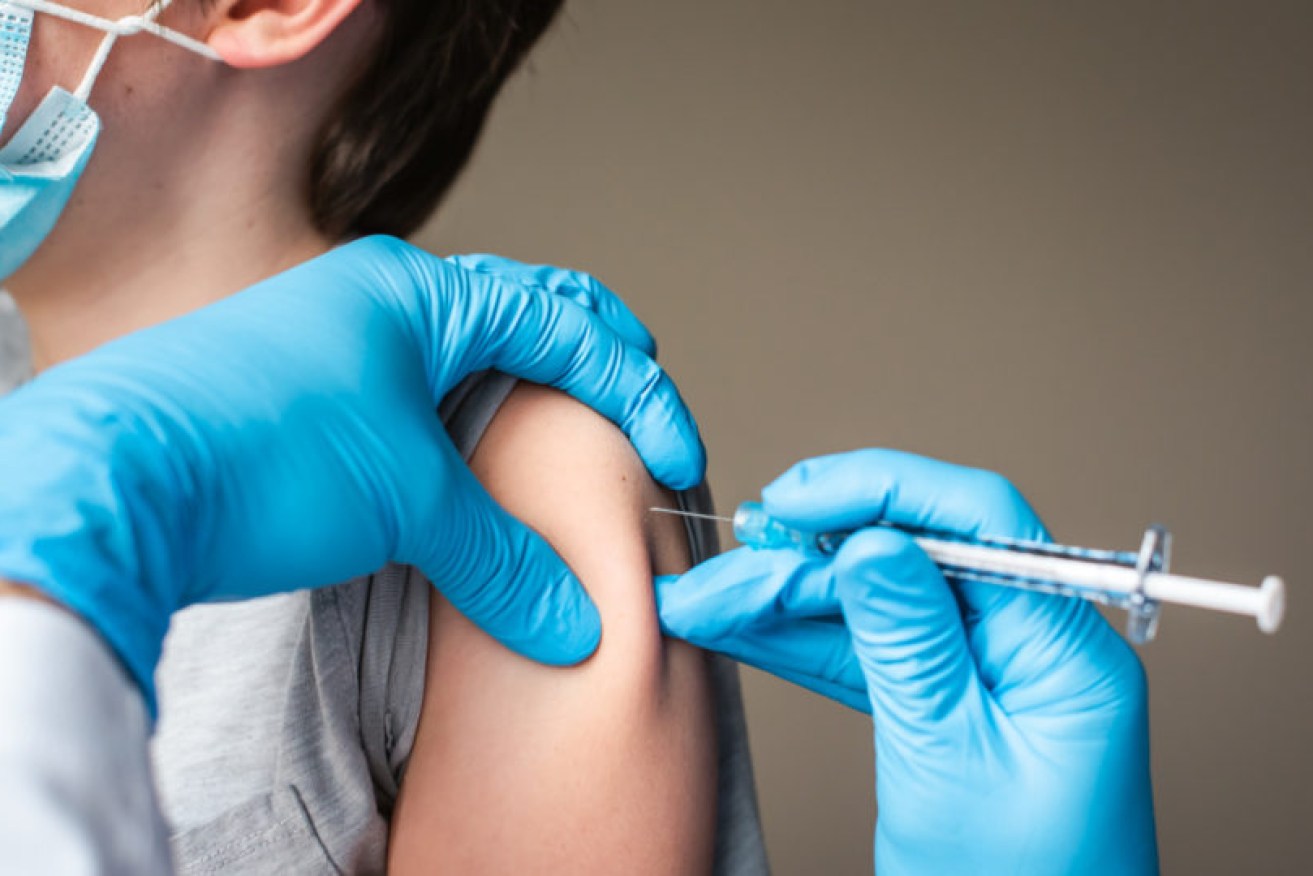We need to talk about COVID-19 vaccines for our youngest kids


Australia is one step closer to having COVID-19 vaccinations for children aged six months to five years old. Photo: Getty
We need a plan for 2021 and 2022 for young children in Australia.
We are closely watching the USA, Canada and the UK as Delta cases rise there, particularly for the unvaccinated – including the children. It appears their summer of fun has come to an abrupt end; and just in time for decision-making regarding their school year starting in Sept.
We need to talk about the youngest kids in Australia, and indeed the world, who will be one of the groups waiting the longest to be offered a COVID vaccine. This cohort matters. There are a few of them – in Australia 15 per cent of the population is under 12 years of age (6 per cent are childcare/preschool age and younger). They will be an important part of COVID transmission dynamics, and their parents are currently struggling to home-school this age group, often while simultaneously attempting to work from home.
The youngest kids deserve a good start to life – Australia’s first 2,000 Days and other frameworks demonstrate our focus on this young age group prior to the pandemic. It is important to ensure solid health and educational footings upon which a child can go on to build a healthy, happy, ‘successful’ life. A re-opening plan in Australia planned around adult vaccination proportions, leaves children behind. Children need to be offered a vaccine before restrictions are loosened.
This age group of <12yrs typically attends child-care/ preschool or primary school (there are 15,400 and 6,300 of these schools in Australia respectively). Currently, in many locations in lockdown, learning is to occur at home. But the restrictions are unclear, and there is no governance – there is a growing frustration around varying interpretations of the rules. Some of the corrosions are coming from angst watching different people’s interpretation of poorly defined restrictions. We are in this together – yet we are not in this together.
Unlearnt lessons
Anecdotal data from several child-care centres in Sydney indicate high child attendance rates (three-quarters full to full as per typical). Teachers are not happy. In most cases, because these teachers have not been deemed essential workers, they have not been eligible for vaccines until recently and they feel frustrated that they must attend work to watch other people’s children, putting themselves at risk of infection and leaving their own children behind to home-school.
When given the opportunity we can anticipate that childcare staff will seek vaccination; research from the US shows that child-care workers have had greater uptake of COVID vaccines than the general population.
Parents are often paying for their child’s childcare, preschool or primary school. Childcare can cost up to $200/day and given 34 per cent of primary and secondary schools in Australia are non-governmental schools – likely these parents are fee paying and therefore they are even more incentivised to send their child to school during lockdown.
The NSW government stated that childcare centers can waive gap-fees for parents who follow guidance to keep their children at home (meaning parents would not be out of pocket for childcare while they keep their children home, but childcare centers would continue to receive the Child Care Subsidy funding (CCS)).
However, childcare centers are not consistently waiving these fees for parents, meaning parents are paying – and so many keep sending their kids. Some childcare staff are reporting that their centres are even more full than usual, hearing parents state that they need their youngest cared for more than before as they now have older children at home to home-school. Childcare centres are a mixing pot now more than ever. It has always been the case that some children attend multiple childcares due to the challenges securing care, with COVID some usual staff might be away in quarantine or sick, so an increased use of casual staff is occurring in some centers.
Infants in need
COVID is almost certainly here to stay. Eventually then, everyone in the world will get COVID or they will get a COVID vaccine – even children.
Pfizer and Moderna started trials of their COVID vaccines in children, ages 6 months to 11, back in March 2021. Recently the USA FDA has asked Pfizer and Moderna to recruit more children into these trials to more carefully assess the safety signals in particular regarding myocarditis. COVID vaccines for the under 12-year-olds likely won’t be ready for Australian children’s arms until mid-2022.
A paper on the MedRxIv prepublication server uploaded a week ago asked parents what they thought about vaccinating their kids against Delta. The study was small, 24 adults in the UK. We can learn from this study what we will possibly need to improve parent’s understanding and choices regarding COVID vaccination for their children.
The study showed that parents feel uncertain about COVID risks for children, are worried about the long-term effects of COVID vaccines, and link the vaccine to how the government has dealt with the pandemic overall. Local social norms also informed parents’ views of COVID vaccines for kids.
Danger in the classroom
Things are not looking good in terms of COVID in NSW, and therefore children returning safely to school.
Kids are at risk of COVID, and Delta may be more worrisome for children in terms of severity and children are an important part of the transmission dynamics– we need to talk more about kids, their vaccines and schooling.
A July 2021 pre-publication paper on MedRxIv modelling German data looking at relaxation of restrictions and transmission of COVID Delta showed that with all models varying non-pharmaceutical interventions, “school children are hit the hardest”.
Another recent pre-publication on MedRxIv models mask wearing and vaccinations in primary school students to understand COVID transmission risks. This paper states that “despite the assumption of high adult vaccination, the risks of both in-school SARS-CoV-2 transmission and resulting infections among students, educators/staff, and their household members remain high when the Delta variant predominates, and students are unvaccinated.”
Another model, using data from Belgium demonstrates that “schools are an important transmission pathway for SARS-CoV-2, with the potential to increase the effective reproduction number”.
Suffice to say, schools are sadly a risky place for kids when they are unvaccinated and COVID (Delta) is spreading rapidly in the community. Kids unfortunately also can bring their COVID infection home and infect their households. Families with young children, may be more likely to have a pregnant mother. And pregnant women are at greater risk of poorer outcomes, particularly with Delta strain.
‘Social bubbles’
NSW will ideally tighten the current lockdown to reduce daily COVID cases. This would make childcare, preschool and schools safer in future – whenever the kids go back to face-to-face learning.
Even if we have a high proportion of us adults vaccinated heading into 2022, we will still need all the typical preventive measures (ventilation, proper masks, distancing, testing/tracing/isolation, cohorting etc) to avoid harder lockdowns and to protect the unvaccinated children.
In the absence of face-to-face school Australia (or just NSW) might consider using “Social Bubbles”. This approach has been used during COVID in NZ and Canada to good effect. A “Social Bubble” is where two families stay home but mingle with one another – they might then share childcare, home teaching or just to socialise. The bubbles must stay monogamous to work well. ‘Family’ might be grandparent etc, or two single moms etc.
Once vaccines are available for children, we may need to consider whether mandates are needed for the school setting. In Hong Kong, which has experienced COVID in a similar way to Australia (borders shut, quarantine, low total case numbers, 34 per cent vaccinated currently) – schools must have 70 per cent of students by grade, fully vaccinated to resume in-person teaching.
It’s time to brainstorm the options and paint some scenarios for 2021 and 2022 for young children in Australia.
Professor Alexandra Martiniuk is an epidemiologist at the University of Sydney.








